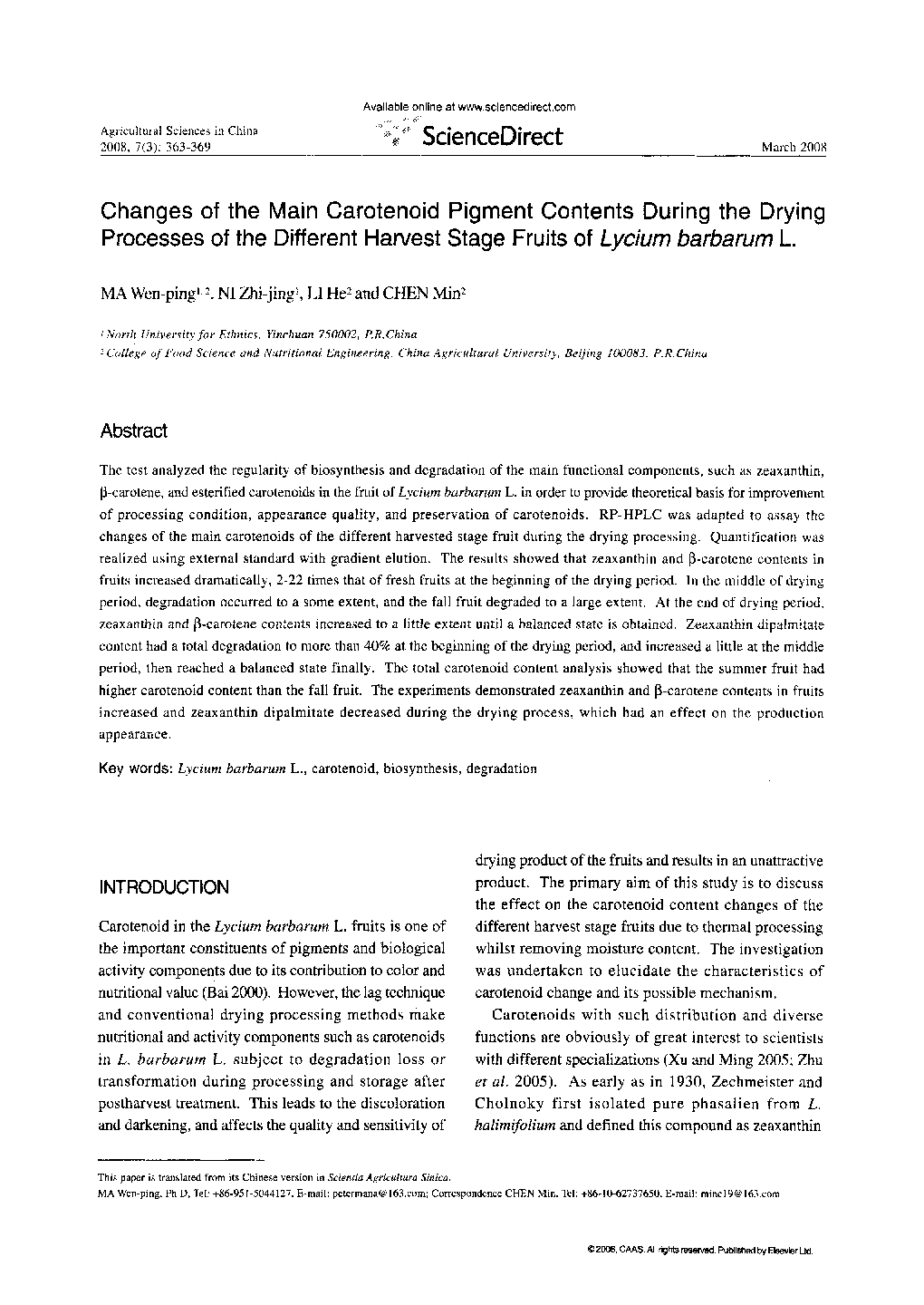| Article ID | Journal | Published Year | Pages | File Type |
|---|---|---|---|---|
| 4490611 | Agricultural Sciences in China | 2008 | 7 Pages |
The test analyzed the regularity of biosynthesis and degradation of the main functional components, such as zeaxanthin. β-carotene, and esterified carotenoids in the fruit of Lycium barbarum L. in order to provide theoretical basis for improvement of processing condition, appearance quality, and preservation of carotenoids. RP-HPLC was adapted to assay the changes of the main carotenoids of the different harvested stage fruit during the drying processing. Quantification was realized using external standard with gradient elution. The results showed that zeaxanthin and β-carotene contents in fruits increased dramatically, 2–22 times that of fresh fruits at the beginning of the drying period. In the middle of drying period, degradation occurred to a some extent, and the fall fruit degraded to a large extent. At the end of drying period, zeaxanthin and β-carotene contents increased to a little extent until a balanced state is obtained. Zeaxanthin dipalmitate content had a total degradation to more than 40% at the beginning of the drying period, and increased a little at the middle period, then reached a balanced state finally. The total carotenoid content analysis showed that the summer fruit had higher carotenoid content than the fall fruit. The experiments demonstrated zeaxanthin and β-carotene contents in fruits increased and zeaxanthin dipalmitate decreased during the drying process, which had an effect on the production appearance.
